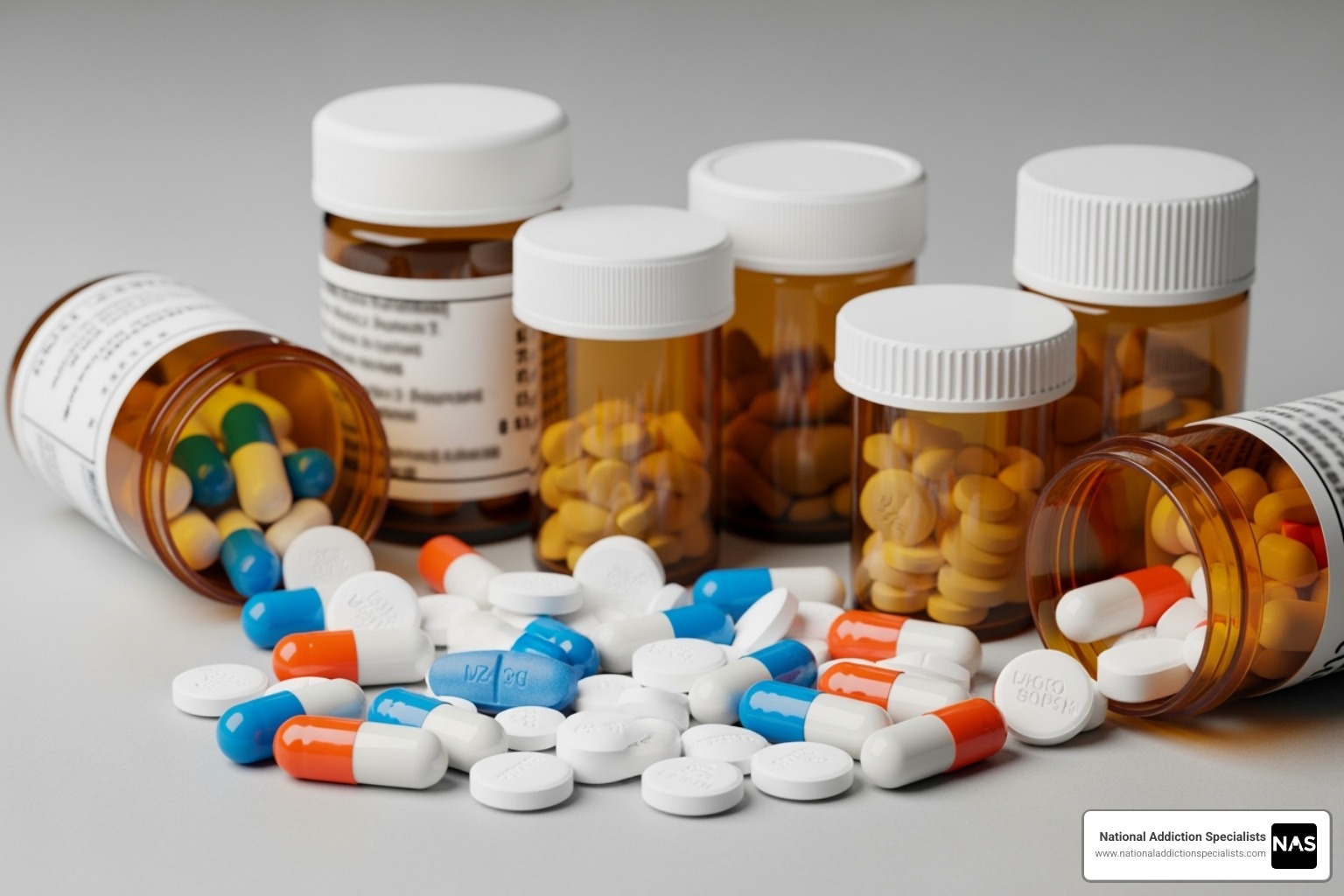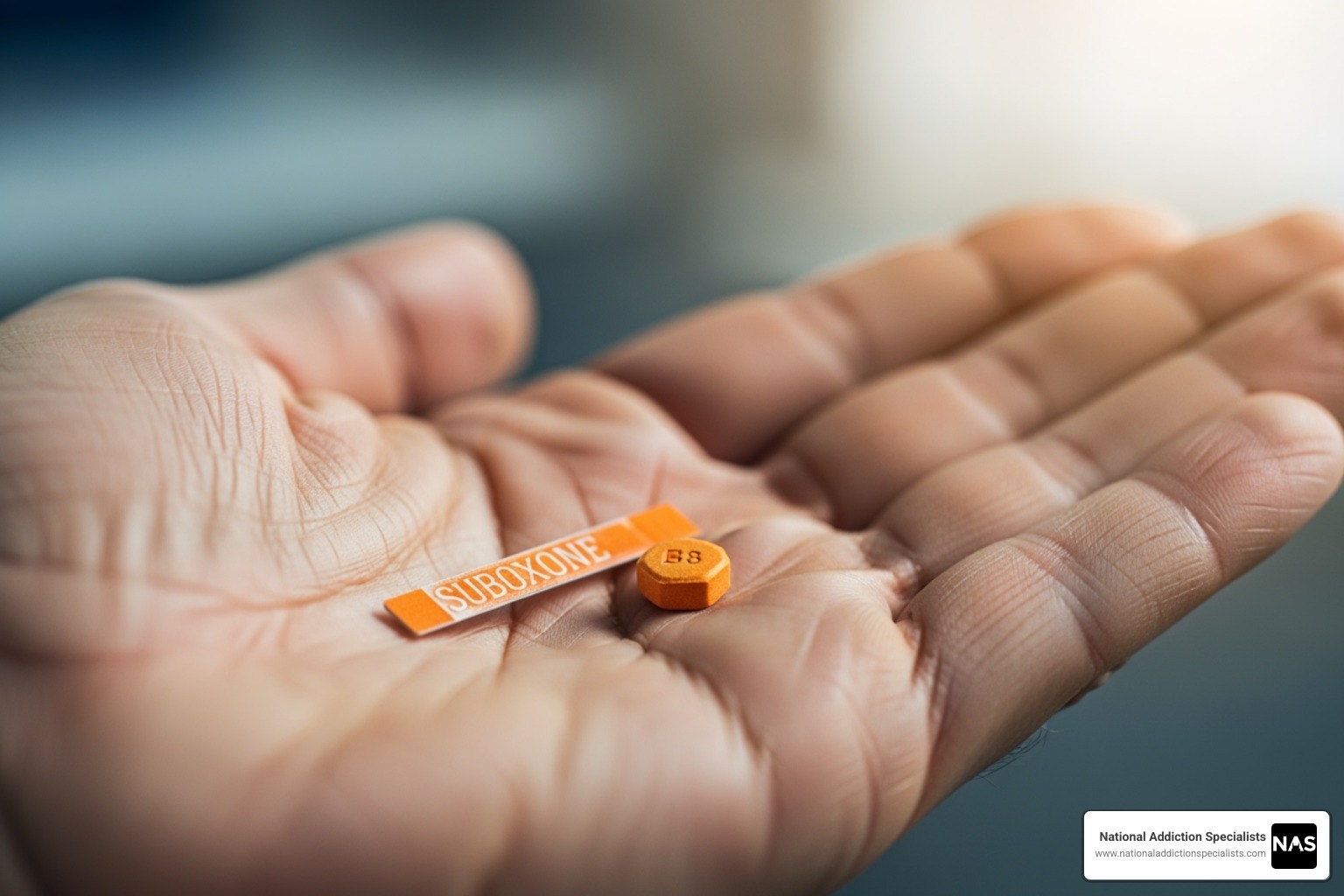Why Getting Your Buprenorphine Dosage Right Matters
Buprenorphine dosage varies significantly based on your individual needs, medical history, and treatment goals. Here’s a quick overview:
For Opioid Use Disorder:
- Induction (Day 1): 8 mg sublingual
- Induction (Day 2): 16 mg sublingual
- Maintenance: 12-24 mg daily (individualized)
- Higher doses: May be needed for fentanyl users
For Pain Management:
- Adults: 0.3 mg IV/IM every 6 hours
- Children (2-12 years): 2-6 mcg/kg every 4-6 hours
- Children (12+ years): Same as adult dosing
Getting your buprenorphine dose wrong can mean the difference between successful recovery and continued struggle. Too little, and you’ll face cravings and withdrawal. Too much, and you risk dangerous side effects.
The challenge is that there’s no one-size-fits-all approach. Your optimal dose depends on factors like opioid tolerance, liver function, and other medications, especially with the rise of fentanyl.
Recent research shows that higher doses, sometimes above the traditional 24mg limit, may significantly improve treatment outcomes for people using potent synthetic opioids like fentanyl.
I’m Dr. Chad Elkin, founder of National Addiction Specialists, and I’ve helped thousands of patients find their optimal buprenorphine dosage. My experience shows that proper dosing and comprehensive care dramatically improve recovery success rates.
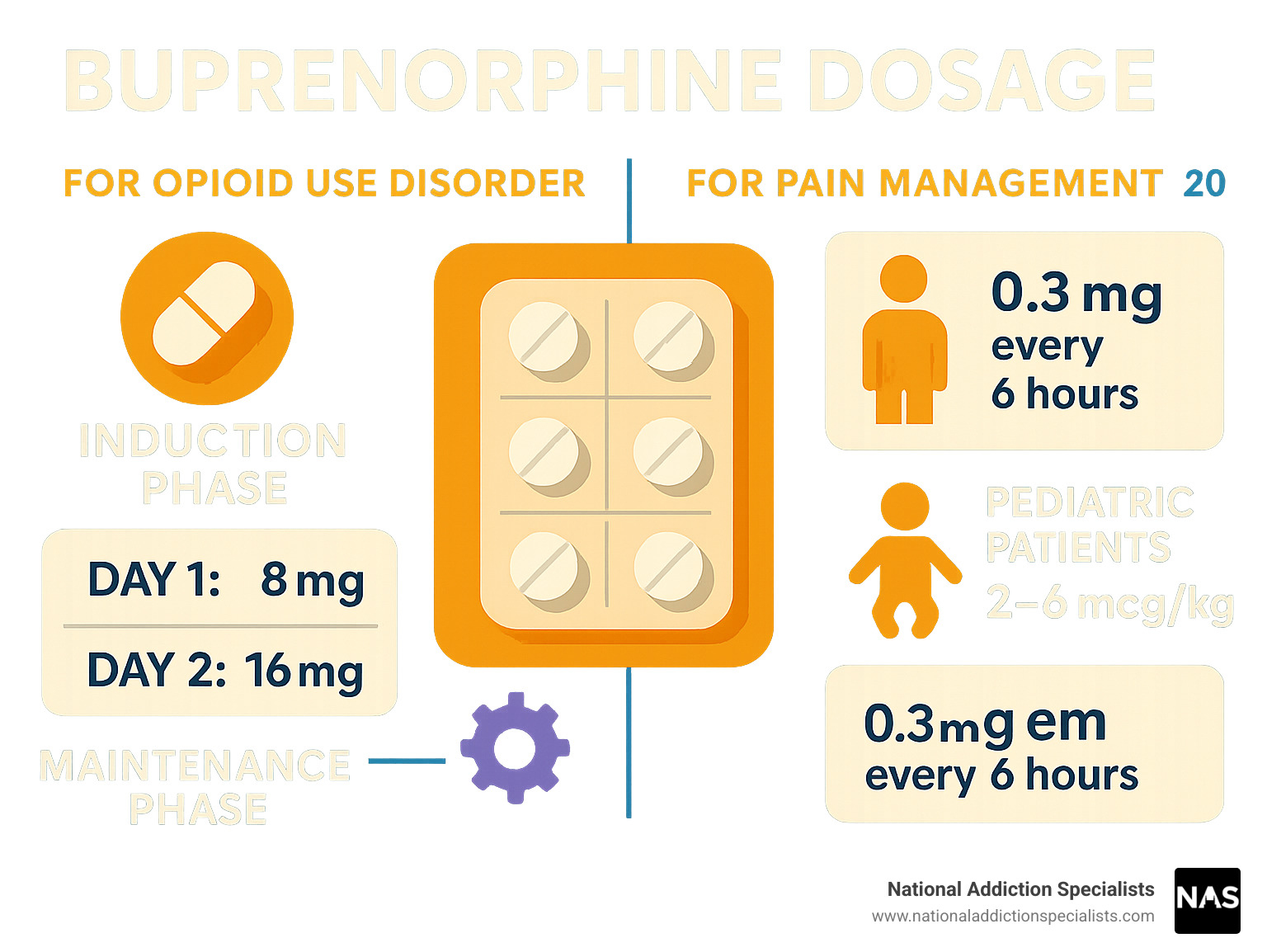
Quick look at buprenorphine dosage:
Understanding Buprenorphine: Forms and Strengths
When starting buprenorphine dosage treatment, you’ll find it comes in several forms, each designed for specific needs. This variety allows for custom treatment, as different forms offer faster dissolution, longer effects, or are suited for hospital use.
Sublingual tablets are a common form of buprenorphine. They come in 2mg and 8mg strengths, dissolve under the tongue, and have a long history of successfully treating opioid use disorder.
Sublingual films are similar to tablets but dissolve faster and more evenly under the tongue. Many patients find them easier to use and more efficient for absorption.
Buccal films stick to the inside of the cheek and dissolve slowly. This is a discreet alternative for those who have difficulty with sublingual forms.
For pain management in medical settings, Buprenex injections provide precise dosing at 0.3mg/mL. These are typically used in hospitals or clinics for immediate pain relief.
Transdermal patches are the newest approach, sticking to your skin and releasing medication steadily over several days, making them useful for chronic pain management.
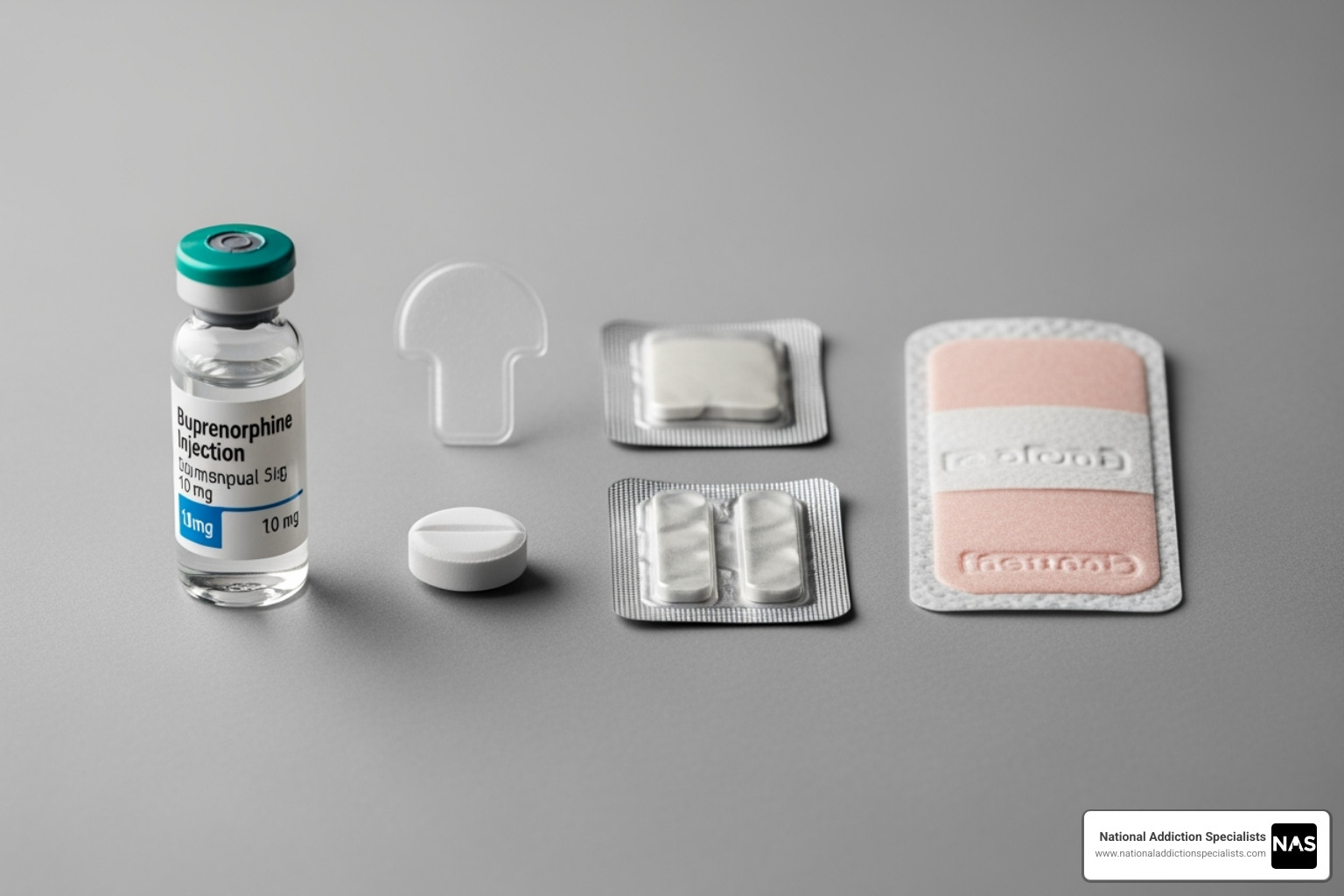
How to Administer Different Forms
Proper administration is crucial for your buprenorphine dosage to be effective. Oral forms (sublingual and buccal) work through absorption, not digestion, and require specific care.
For sublingual tablets and films, place the medication under your tongue and let it dissolve completely without chewing, swallowing, or moving it. This takes several minutes.
Do not eat, drink, or smoke while the medication dissolves, as this can wash it away and reduce its effectiveness.
Buccal films work similarly; place the film between your cheek and gum and let it dissolve without disturbing it.
A key consideration is the risk of dental problems associated with mouth-dissolving buprenorphine. The FDA has warned about tooth decay, cavities, and tooth loss, even in patients with no prior dental issues.
Protect yourself with excellent oral hygiene and regular dental visits. Learn more from the FDA warning on dental problems with transmucosal buprenorphine.
Correct administration ensures your prescribed buprenorphine dosage is effective. Following these rules is crucial for successful treatment.
Buprenorphine Dosage for Opioid Use Disorder (OUD)
Finding the right buprenorphine dosage is life-changing for those with opioid addiction. At National Addiction Specialists, our Medication Assisted Treatment for Opioid Addiction combines medication with counseling and support to help patients transform their lives.
Buprenorphine is effective for OUD due to its unique properties as a partial opioid agonist. Unlike full agonists like heroin, it only partially activates opioid receptors, which is key to its power in recovery.
This partial action reduces cravings, prevents withdrawal symptoms, and blocks the euphoric effects of other opioids, removing the reward for use.
A key safety feature is its ceiling effect. Taking more buprenorphine doesn’t increase its effects beyond a certain point, particularly dangerous respiratory depression. This makes overdose much less likely.
Many OUD medications, like Suboxone, include naloxone as a safety measure. When taken as prescribed (orally), naloxone is not absorbed. However, if injected, it activates and causes immediate, unpleasant withdrawal symptoms, deterring misuse. Learn more on our What is Suboxone? page.
The Critical Induction Phase
Starting buprenorphine treatment involves a critical induction phase. Proper timing of the first buprenorphine dosage is essential to avoid precipitated withdrawal, a sudden and severe withdrawal experience.
Buprenorphine has a strong attraction to opioid receptors. If taken while other opioids are still in your system, it can displace them, causing a rapid shift from full to partial receptor activation. This triggers severe, immediate withdrawal.
To prevent this, you must be in moderate withdrawal before your first dose. We use tools like the Clinical Opiate Withdrawal Scale (COWS) to confirm readiness, usually requiring a score over 12.
The waiting period varies: 6-12 hours for short-acting opioids (heroin), 36-72 hours for long-acting opioids (methadone), and 12+ hours for the unpredictable fentanyl.
Once ready, we start your buprenorphine dosage carefully. Day 1 typically involves up to 8 mg sublingually, sometimes split into smaller doses, with a max of 16 mg. Day 2 usually increases to 16 mg, with adjustments over the following days until you are stable. Our team at National Addiction Specialists guides you through every step. For more details, check out our page on How Suboxone Treatment Works.

The Maintenance Phase: Finding Your Stable Dose
After induction, the maintenance phase begins. The goal is to find the stable buprenorphine dosage that eliminates cravings, allowing you to focus on recovery.
Most patients stabilize on 12 mg to 24 mg daily. This dose usually prevents withdrawal and cravings without side effects. However, dosing is highly individual.
The rise of fentanyl means some people, especially those with high tolerance, may need doses higher than the traditional range.
Recent Research on higher buprenorphine doses shows significant benefits. An NIH-funded study found patients on doses above 24 mg went 50% longer before needing emergency care, highlighting the importance of flexible dosing for stability.
The FDA has no maximum dose restriction, allowing us to find the right dose for you, whether it’s 16 mg or 32 mg. Your recovery shouldn’t be limited by outdated guidelines.
Finding your optimal buprenorphine dosage is a collaborative process. We work with you to adjust your dose until you are stable and craving-free.
Make an Appointment to Treat Addiction
Please don’t hesitate. Make an appointment today.
Buprenorphine Dosage for Pain Management
Buprenorphine is not only for addiction treatment; it’s also a powerful pain medication. For pain management, the buprenorphine dosage approach is completely different from that for OUD.
In a hospital setting for post-surgery or severe chronic pain, buprenorphine’s partial agonist activity provides effective pain relief with a lower overdose risk compared to opioids like morphine.
The ceiling effect is a key benefit for pain management, controlling pain while minimizing the risk of respiratory depression, even at higher doses.

Adult Buprenorphine Dosage for Pain
For adults with moderate-to-severe pain, injectable buprenorphine is used in medical settings for professional monitoring.
The standard buprenorphine dosage for adult pain management is 0.3 mg every 6 hours, given either intravenously (IV) or intramuscularly (IM). An additional 0.3 mg dose may be given within 30-60 minutes if needed.
This injectable form, often known by the brand name Buprenex, is particularly valuable for patients who haven’t been taking opioids regularly (opioid-naive patients). Your medical team will monitor you carefully for effectiveness and side effects.
Pediatric Buprenorphine Dosage for Pain
Pediatric pain management requires extra care, as children process medications differently and have tighter safety margins.
For children aged 2-12 years, the buprenorphine dosage is calculated based on their weight, typically 2-6 mcg per kilogram of body weight, given IV or IM every 4-6 hours.
Children over 12 years generally receive the same dosing as adults: 0.3 mg IV or IM every 6 hours. A repeat dose of up to 0.3 mg may be given if needed within 30-60 minutes.
Using buprenorphine for pediatric pain is a carefully considered decision, weighing the benefits against potential risks to ensure the highest safety standards.
Key Considerations for Your Buprenorphine Dosage
Finding the right buprenorphine dosage is complex and requires a personalized approach. At National Addiction Specialists, we consider your unique health and circumstances to determine the optimal dose for your Opioid Addiction Treatment.
Your buprenorphine dosage must account for factors like liver and kidney function, age, other medications, and pregnancy. This personalized approach is key to transformative treatment.
Dosage Adjustments for Special Populations
Certain populations require special dosage considerations for safety and effectiveness.
- Liver problems (hepatic impairment) require caution. Since the liver processes buprenorphine, impairment can cause it to build up. We typically start with half the usual dose and monitor liver function closely.
- Kidney issues (renal impairment), including for patients on dialysis, generally do not require dose adjustments. Buprenorphine is processed in a way that is safe for those with kidney problems.
- Geriatric patients are more sensitive to medications. We follow a “start low, go slow” approach, beginning with a lower buprenorphine dosage and increasing it gradually while monitoring for side effects.
- Pregnancy requires special consideration. For pregnant individuals with OUD, buprenorphine is often the safest choice for both mother and baby. Doses may need adjustment during pregnancy, and we work with your obstetrician to manage care, including potential newborn withdrawal.
Potential Drug Interactions
Buprenorphine can interact with other medications, which can be dangerous or reduce treatment effectiveness.
The most significant risk is combining buprenorphine with CNS depressants (e.g., benzodiazepines, alcohol), which can cause life-threatening respiratory depression. If both are necessary, close monitoring and lower doses are required.
Serotonin syndrome, a rare but serious condition, can occur when buprenorphine is combined with certain antidepressants or migraine drugs. We need a complete list of your medications to avoid this.
Buprenorphine interacts with the liver’s CYP3A4 enzyme system. Some drugs can alter its metabolism, making your dose less effective or too strong. A complete medication list, including supplements, is vital.
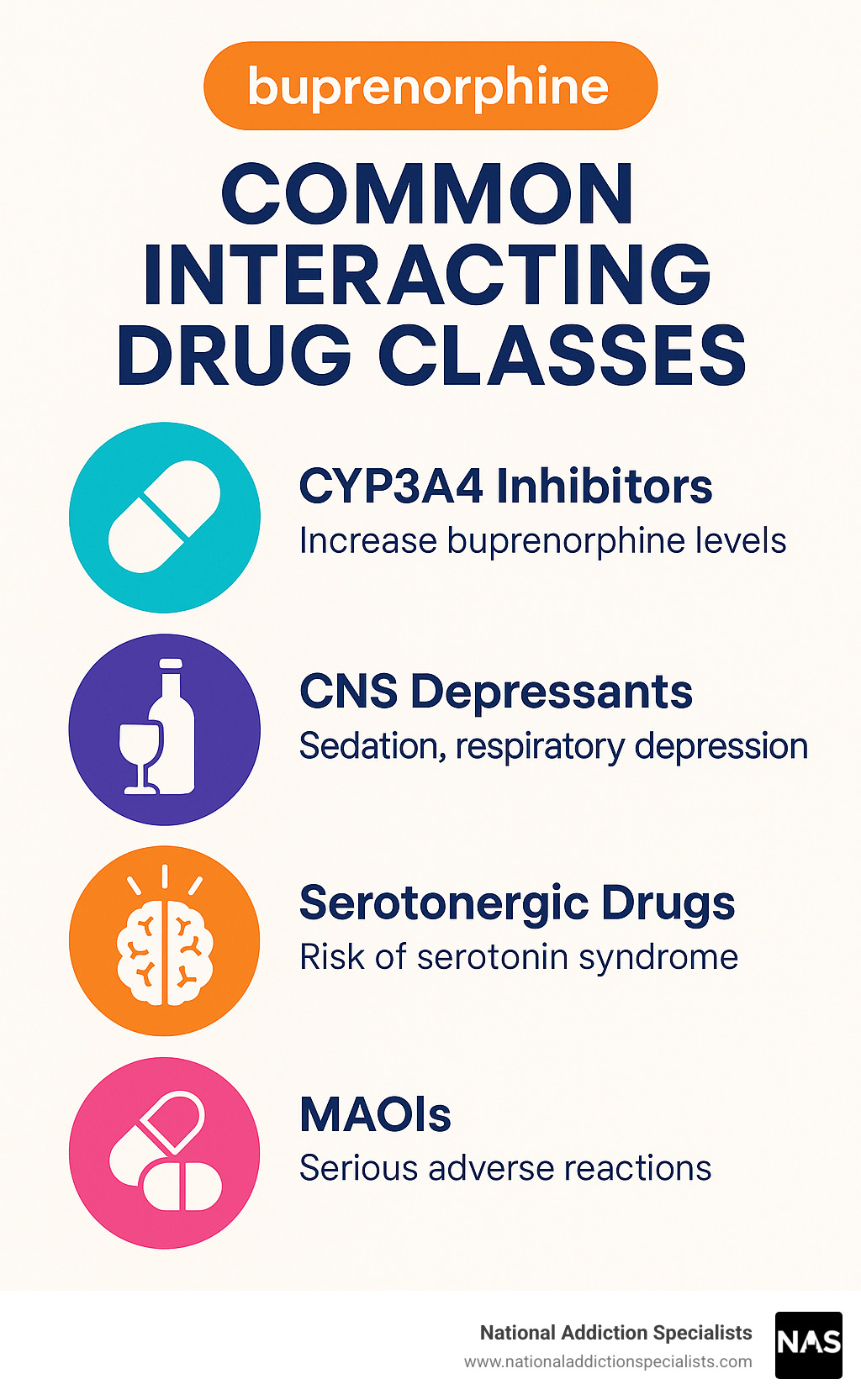
How Buprenorphine’s Unique Properties Affect Dosage
Understanding buprenorphine’s properties helps explain how your buprenorphine dosage works.
- Partial Agonist: It activates opioid receptors enough to prevent withdrawal and cravings without causing a dangerous high or severe respiratory depression.
- High Receptor Affinity: It binds tightly to receptors, blocking other opioids. This is why careful timing during induction is crucial to avoid precipitated withdrawal.
- Ceiling Effect on Respiratory Depression: This is a key safety feature. Unlike other opioids, higher doses do not proportionally increase the risk of breathing problems.
- Long Half-Life: This allows for convenient once-daily dosing, so you can focus on your life, not your medication schedule.
These properties make buprenorphine ideal for recovery, focusing on stability rather than a high. While generally well-tolerated, potential side effects exist. Learn more on our Suboxone Side Effects page.
Frequently Asked Questions about Buprenorphine Dosing
Starting or adjusting your buprenorphine dosage can bring up many questions. Asking them is an important part of your recovery. Here are answers to common concerns, with more details on our Suboxone Treatment FAQ page.
What happens if I miss a dose of buprenorphine?
If you miss a dose, don’t panic. Buprenorphine’s long-lasting effects provide some flexibility. Take the missed dose as soon as you remember, unless it’s almost time for your next one. In that case, skip the missed dose.
Never double your dose to catch up. This can cause side effects like nausea and drowsiness. Consistency is key. While one missed dose won’t cause immediate withdrawal, a regular schedule maintains stable levels in your system, preventing cravings. If you frequently forget doses, contact us. We can help with strategies like reminders or schedule adjustments.
Can I take more buprenorphine if my cravings are bad?
We understand the impulse to take more when cravings are strong, but you should never adjust your buprenorphine dosage on your own. Contact us immediately if you have strong cravings or withdrawal. This is not a failure, but important feedback for adjusting your treatment plan.
Strong cravings and other signs of under-dosing (anxiety, restlessness, muscle aches, poor sleep) indicate your dose may be too low. Taking unprescribed doses is dangerous. It can cause side effects, lead to dangerous drug interactions, and undermine your recovery by creating a pattern of misuse.
Your buprenorphine dosage is not set in stone. Recovery is a dynamic process, and your dose may need adjustment over time. We are here to help you do that safely.
Why is naloxone included in some buprenorphine medications?
Combination products like Suboxone include naloxone as a clever safety feature. Naloxone acts as an abuse-deterrent, a security system against misuse.
When taken as prescribed (dissolved in the mouth), naloxone has poor oral bioavailability, meaning it’s not absorbed and has no effect. However, if injected, naloxone is activated and rapidly enters the bloodstream. As an opioid blocker, it precipitates immediate and severe withdrawal symptoms.
This design discourages injection, making these medications safer for take-home use. This feature makes modern addiction treatment safer and more effective, supporting the convenience of at-home treatment. Learn more about the Benefits of Suboxone Treatment.
Conclusion: Partnering with a Specialist for Your Treatment
Finding the right buprenorphine dosage is a highly personal process, not a one-size-fits-all solution. Factors like your medical history, opioid use history, and body chemistry all influence the optimal dose.
Professional guidance is essential. Never self-adjust your buprenorphine dosage. Doing so can lead to cravings, side effects, and other dangers.
At National Addiction Specialists, we understand that seeking treatment can be overwhelming. Our care is designed to meet you where you are.
Our telemedicine approach offers expert care from the privacy of your home. If you’re in Tennessee or Virginia, our team can help you find the right buprenorphine dosage and create a comprehensive treatment plan with medication and counseling. We accept Medicaid and Medicare, ensuring cost is not a barrier to care. Our Online Suboxone Doctors provide personalized, compassionate treatment.
Recovery is about rebuilding your life, and it starts with the first step. We’re here to support you.
You don’t have to do this alone. Take the first step towards a healthier future today.
Make an Appointment to Treat Addiction
Please don’t hesitate. Make an appointment today.
This article was medically reviewed by:
Chad Elkin, MD, DFASAM is a board-certified addiction medicine physician, founder, and Chief Medical Officer of National Addiction Specialists, dedicated to treating substance use disorders. A Distinguished Fellow of the American Society of Addiction Medicine (ASAM), Dr Elkin currently serves as President of the Tennessee Society of Addiction Medicine (TNSAM) and has held various leadership roles within the organization. Dr Elkin chairs ASAM’s Health Technology Subcommittee and is an active member of its Practice Management and Regulatory Affairs Committee, State Advocacy and Legislative Affairs Committee, and other committees. He also serves on the planning committee for the Vanderbilt Mid-South Addiction Conference. Committed to advancing evidence-based policy, Dr Elkin is Chairman of the Tennessee Association of Alcohol, Drug, & Other Addiction Services (TAADAS) Addiction Medicine Council, which collaborates with the TN Department of Mental Health & Substance Abuse Services (TDMHSAS). He has contributed to numerous local, state, and national task forces, helping develop professional guidelines, policies, and laws that align with best practices in addiction medicine. His work focuses on reducing addiction-related harm, combating stigma, and ensuring access to effective treatment.Passionate about the field of addiction medicine, he remains dedicated to shaping policy and enhancing patient care.
Suboxone® and Subutex® are a registered trademark of Indivior UK Limited. Any mention and reference of Suboxone® and Subutex® in this website is for informational purposes only and is not an endorsement or sponsorship by Indivior UK Limited.








